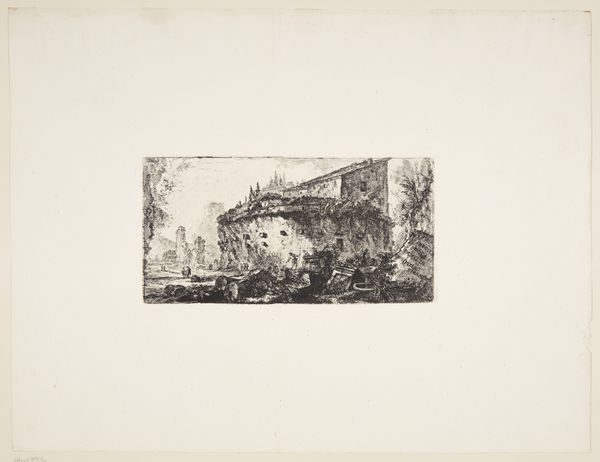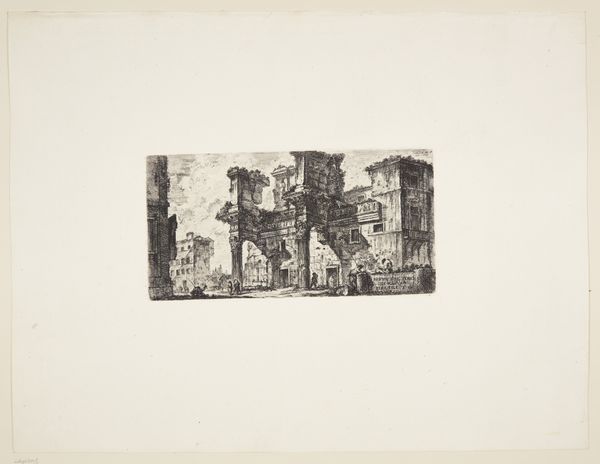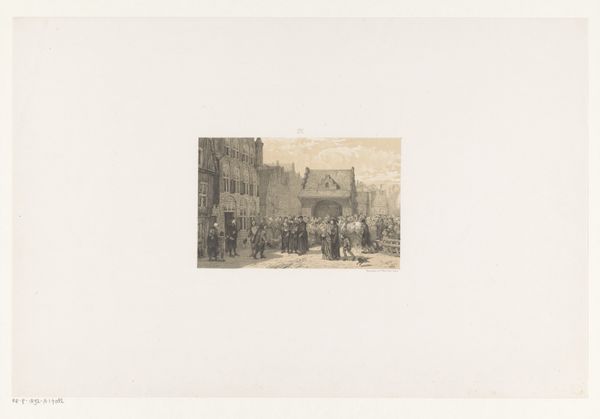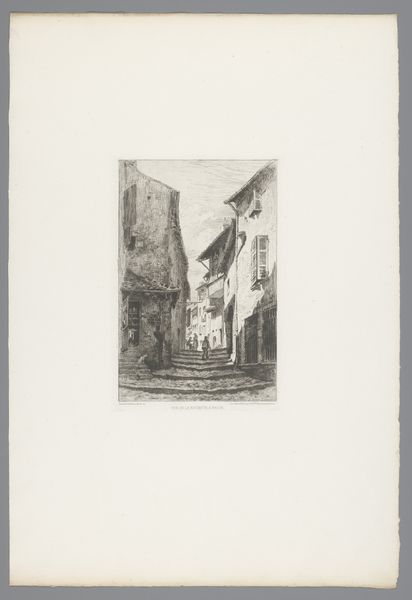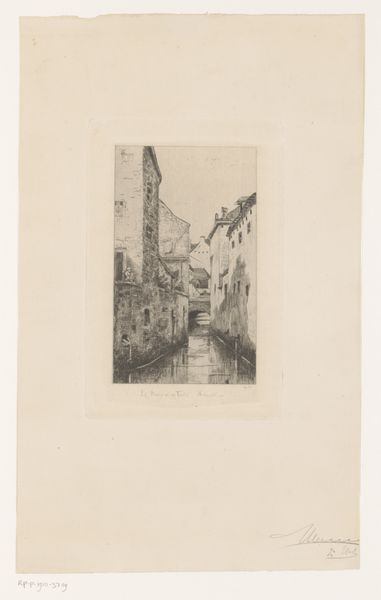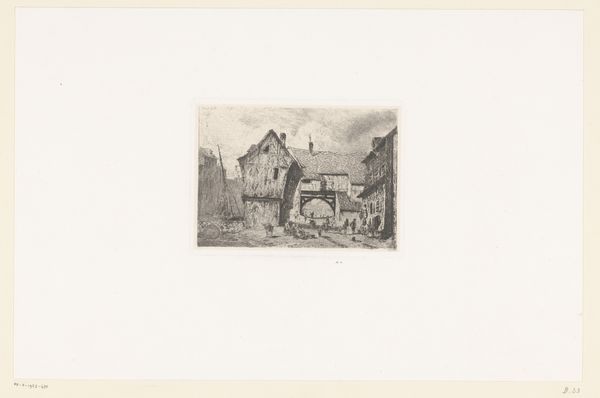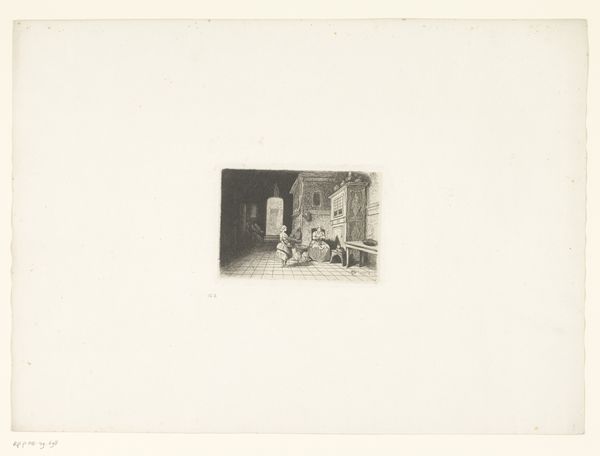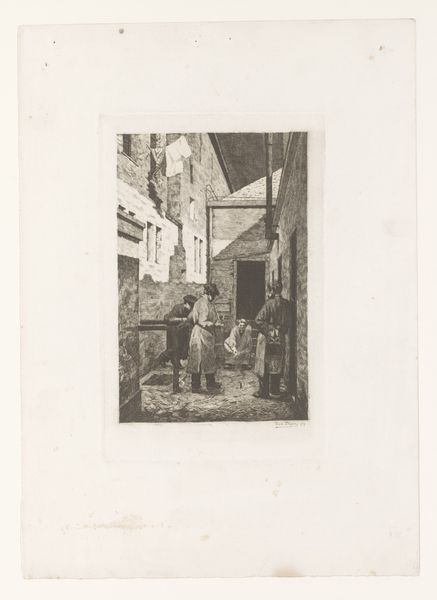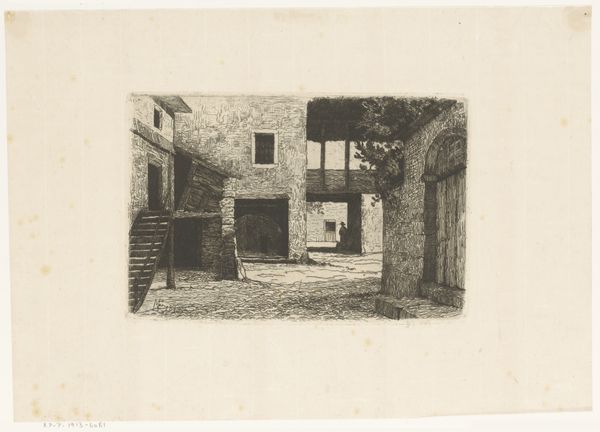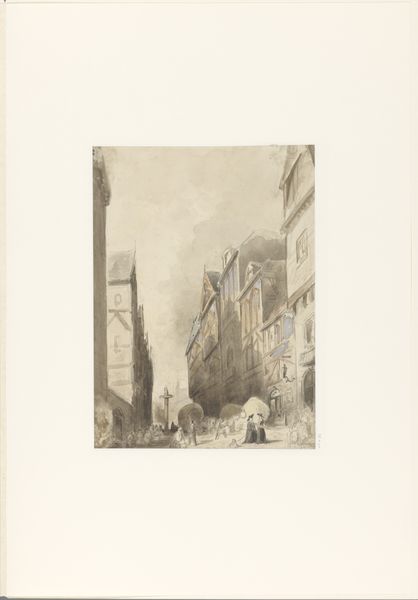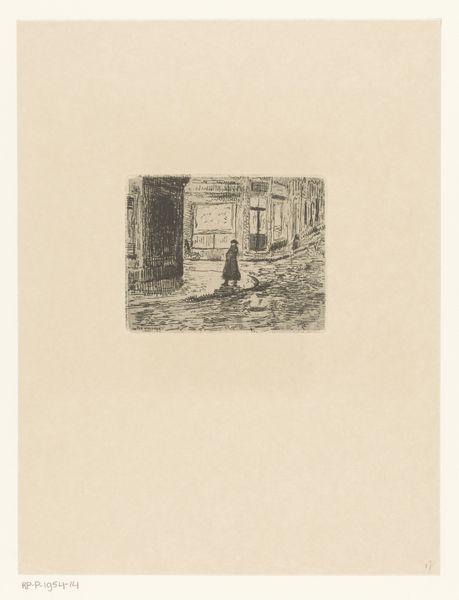
print, engraving, architecture
#
neoclassicism
# print
#
old engraving style
#
landscape
#
cityscape
#
history-painting
#
engraving
#
architecture
Dimensions: 131 mm (height) x 265 mm (width) (plademaal)
Giovanni Battista Piranesi etched this view of the Forum of Augustus in the 18th century. Dominating the scene are the fragmented ruins of a once-grand structure, marked by a prominent archway. Arches, throughout history, have served as potent symbols of transition, triumph, and imperial power, recalling the Roman Empire's vast architectural influence. Consider the arch not merely as a structural element, but as a motif that reappears across epochs—from ancient Roman triumphal arches to the Renaissance fascination with classical forms. Its endurance symbolizes humanity's continuous dialogue with its past. This echoes in the archways of Renaissance paintings and even in modern architecture. Here, the arch acts as a passage into history, engaging viewers on a deep, subconscious level. It captures the emotional weight of time and memory. This non-linear, cyclical progression of symbols has resurfaced and evolved, taking on new meanings in different historical contexts.
Comments
No comments
Be the first to comment and join the conversation on the ultimate creative platform.

